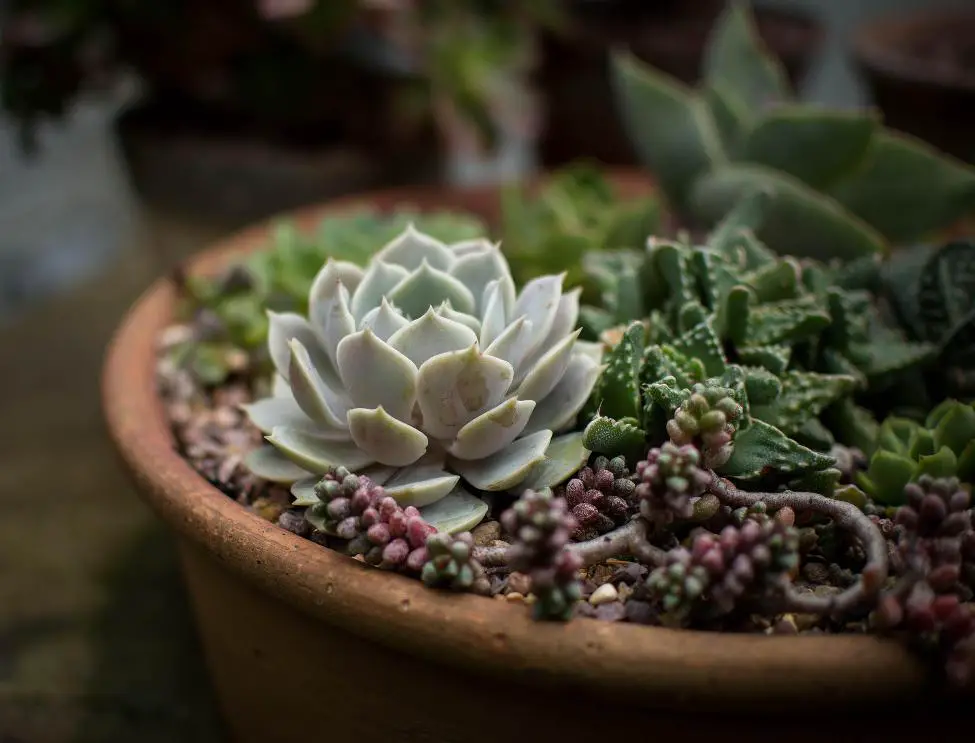The slow growth and long display life of cacti and succulents make them ideal plants to grow in the limited space of a container.
Potted plants can also be moved indoors or outdoors, depending on the weather, which suits varieties that are susceptible to cold, dampness, and frost.
What are the benefits of growing your succulent plants in containers?
Potted plants grow differently when given more room. Succulents grow far more quickly when in-ground or in large beds. A 200 mm tall ten-year-old potted plant can suddenly transform into a 600 mm tall specimen within a few months as a result of being released from the bondage of the pot. While this fast growth can be seen as a positive, potted plants hold their shape and form better. They also tend to have better colours and will be less brittle. And, of course, they can be easily moved and swapped around, allowing for a change in visual display at any time.
Which compost is best for your cacti and succulents?
Cacti and succulents will thrive in a potting compost that is free-draining yet retains moisture.
Special proprietary cactus potting composts are ideal, or you can use commercial soil-less compost mixed with grit. Alternatively, make your own soil-less compost from coconut fibre, peat, bark, and grit. Soil-based compost is fine if mixed with grit.
The extent to which the soil drains and retains water, plus it’s level of acidity all determine which ingredients need to be added and in what quantities.
For Indoor plants, mix two parts of commercial soil-less compost with one part of grit. Soil-based composts are acceptable but tend to become compacted when dry.
For Outdoor plants, Assess the quality of the soil before you plant. The majority of cacti and succulents prefer slightly acidic soil. To make the soil more acidic, add peat or garden compost. If the soil is sandy, add one part peat to three parts soil. Add grit to the improved soil.
For Outdoor containers and raised beds, make a soil-less compost out of three parts of either peat, coconut fibre, or wood bark, and one part washed grit; use equal parts of peat and washed grit to fill pots that do not drain easily.
How much compost do your cacti need?
All pot-grown plants need to have their roots covered by compost to within 1 cm of the rim to enable water and air to reach the roots. In time, compost compacts and the level drops, so remember to top it up.
How to improve drainage in potted succulents?
Good drainage is necessary to prevent root rot in cacti and succulents. When planting up a container, begin by covering each drainage hole with a crock and a layer of clay pellets. Place paper on top to prevent the compost from sticking and impeding drainage. You could either use a brown paper layer or, a kitchen paper towel for this.
Do succulents need top dressing?
Covering the soil in a top dressing of small gravel or crushed stones has many practical benefits. It helps to conserve moisture in the soil and prevents the surface from drying out. It suppresses weeds and inhibits the growth of algae. It also reduces soil erosion and prevents splash marks on the plants during watering. Top dressing must be inert so do not use limestone which increases the soil’s alkalinity.
As well as serving a practical function, top dressings are also decorative. It is best, however, to avoid artificially coloured gravels as these detract from the simplicity of the plants. Some examples of top dressings include pea-sized pebbles, small gravel and, crushed stone.
Succulent plants do well in containers and are a great addition to any home or garden. With the right planning and care your cacti and succulents will grow healthy in no time.
Note: Clicking the above links will take you to Amazon.com where you’ll get additional product information. If you make a purchase, we may earn a commission at no additional cost to you.
